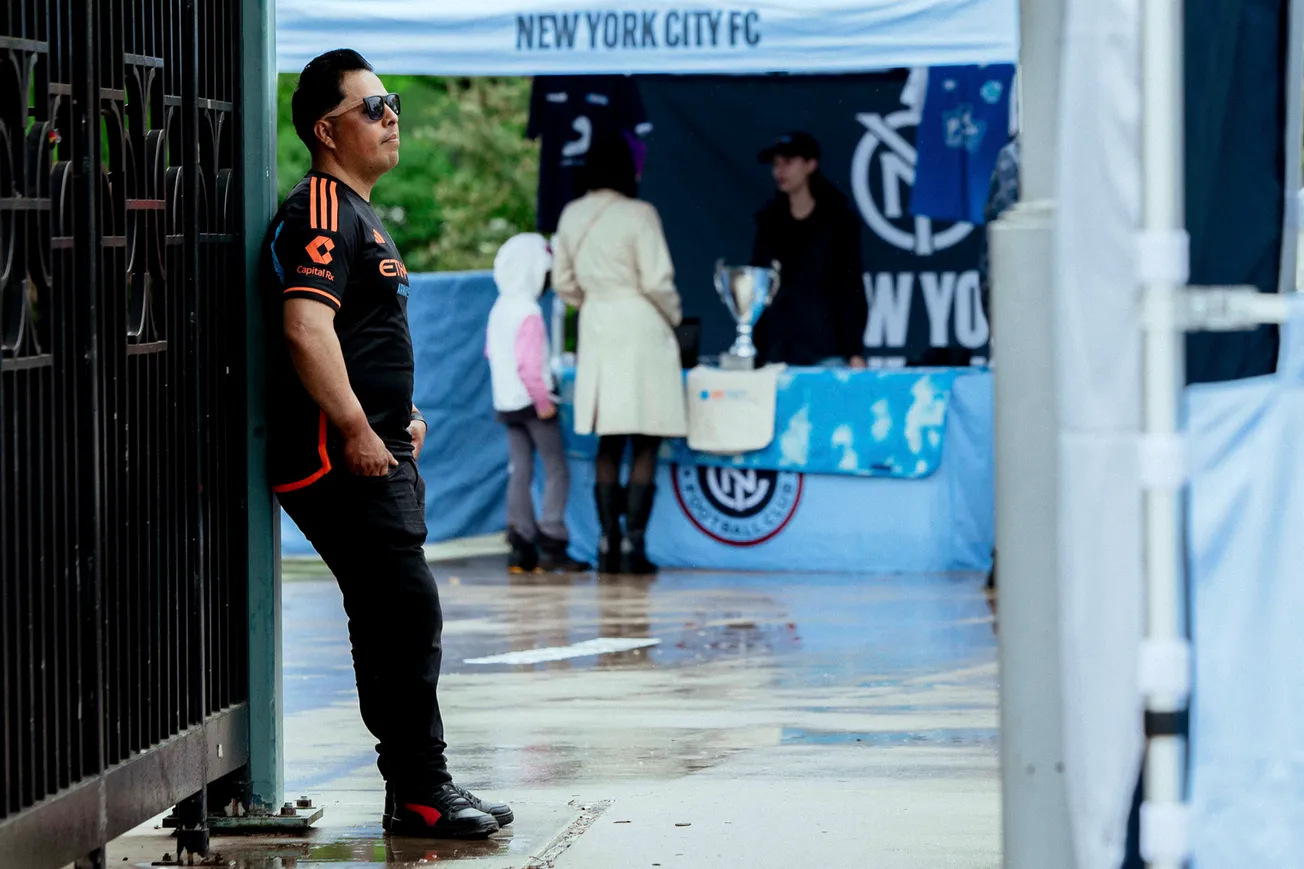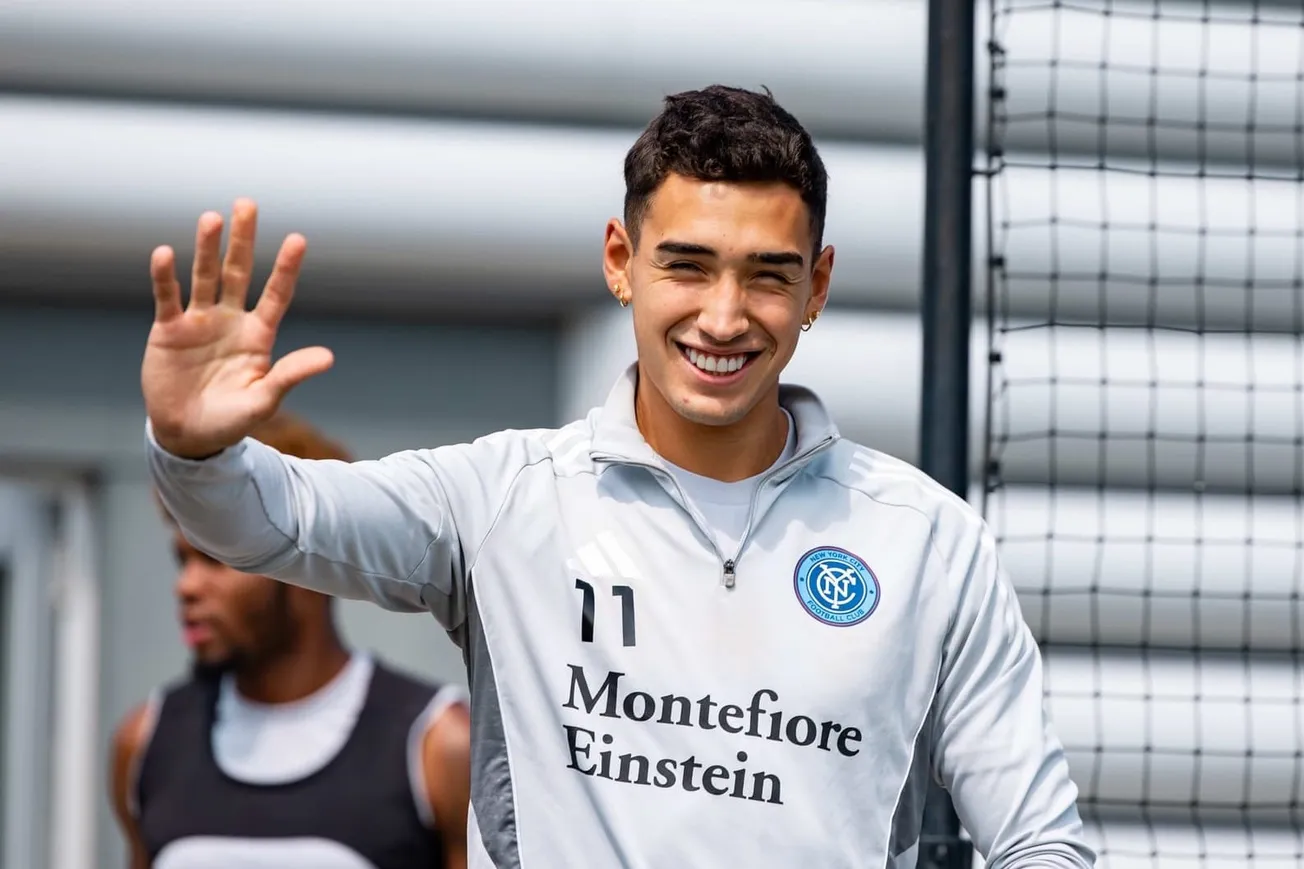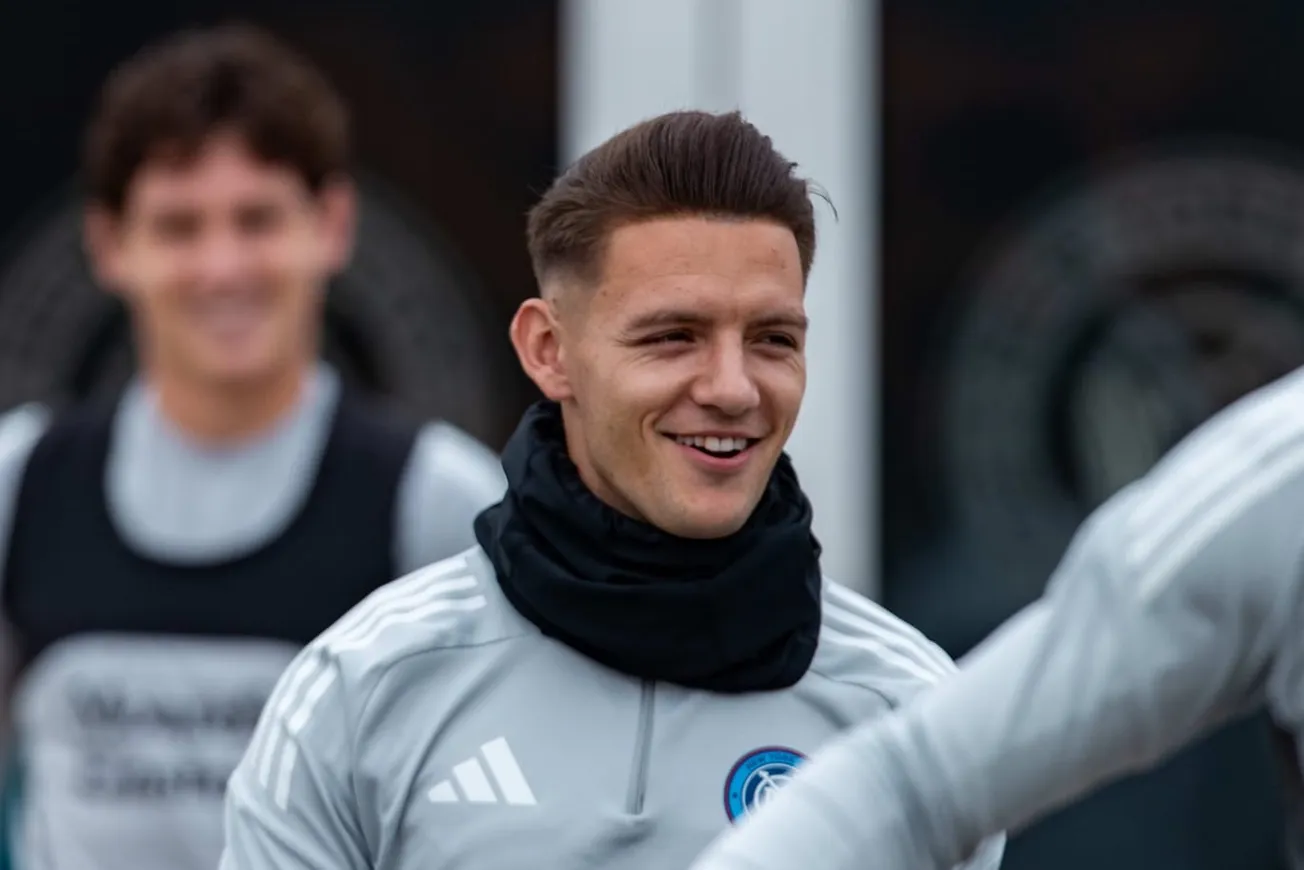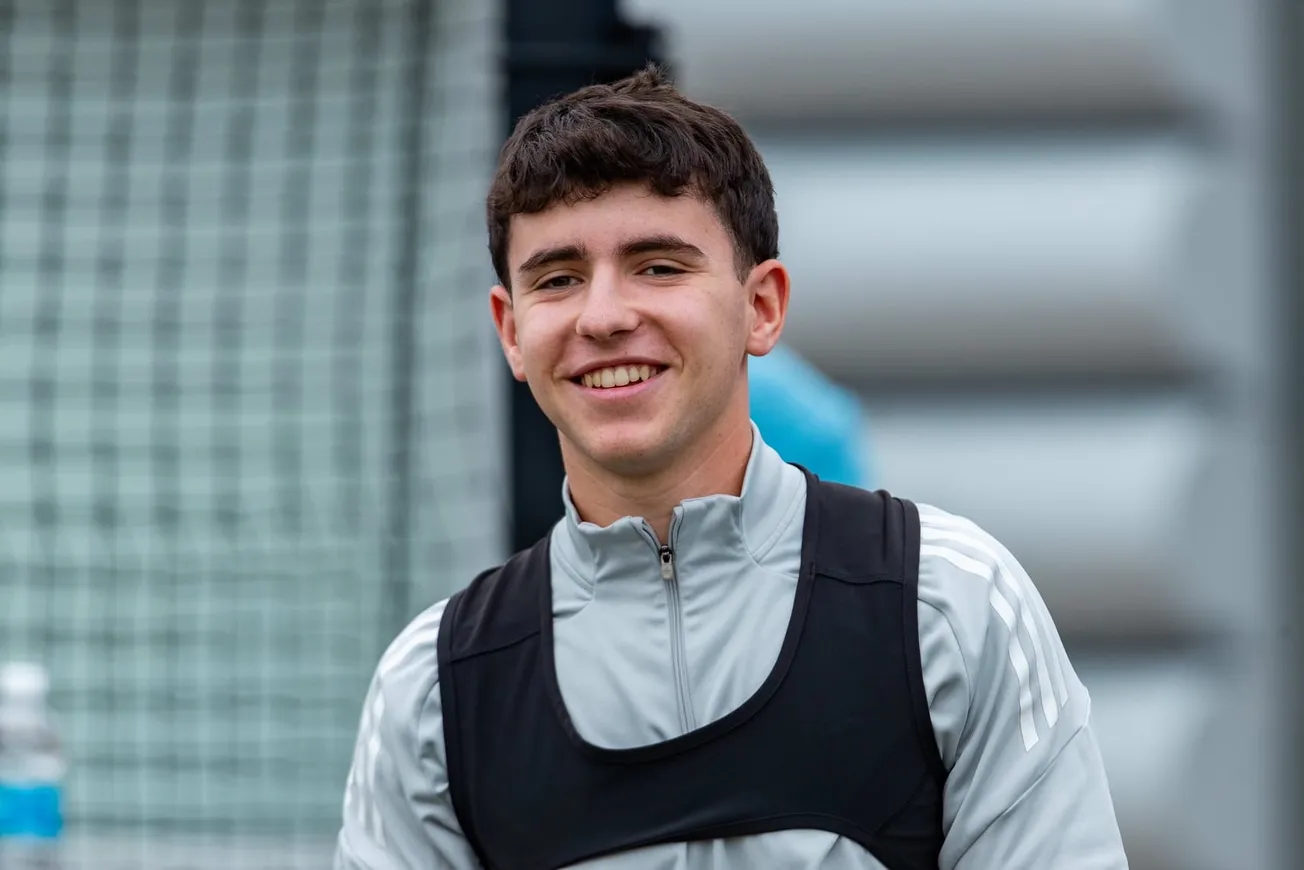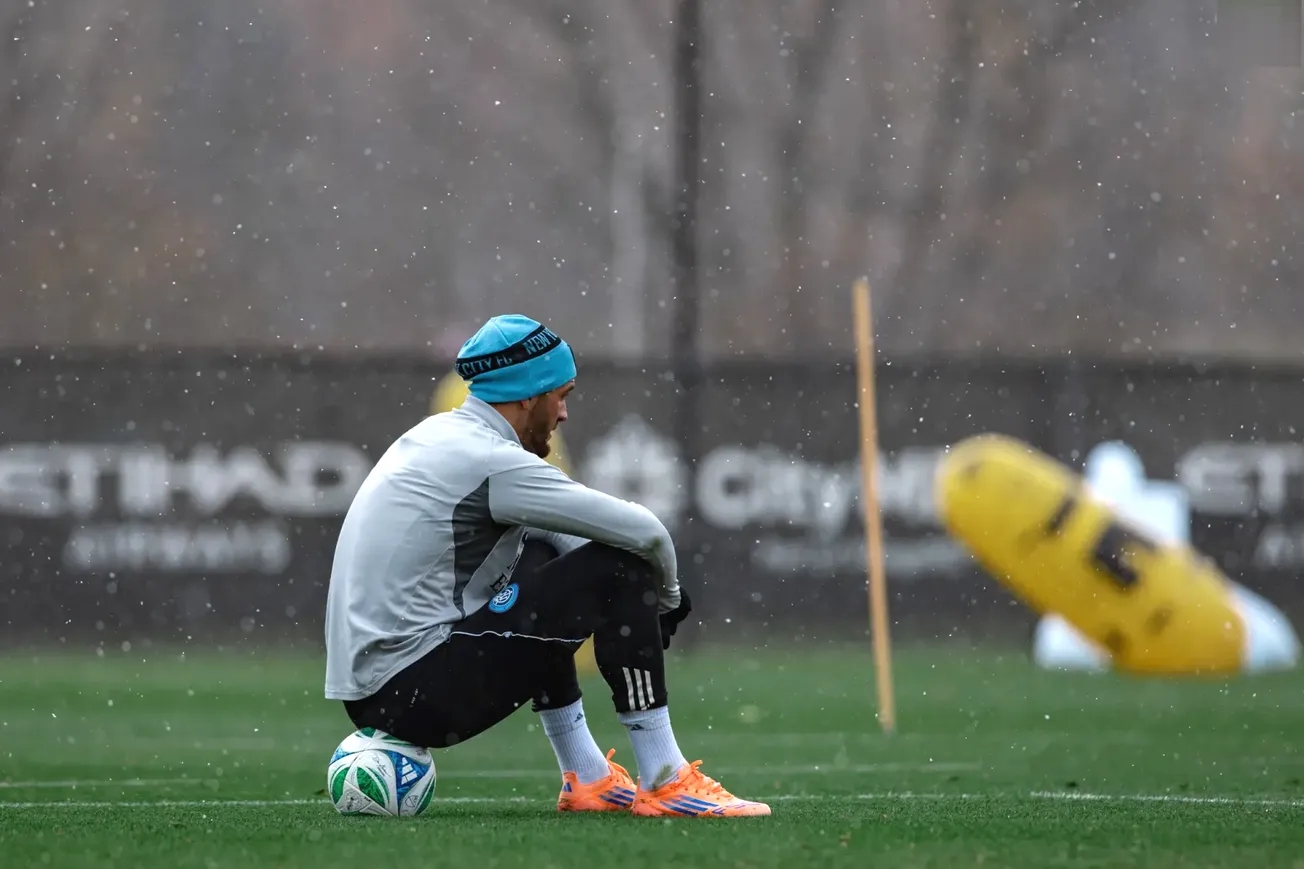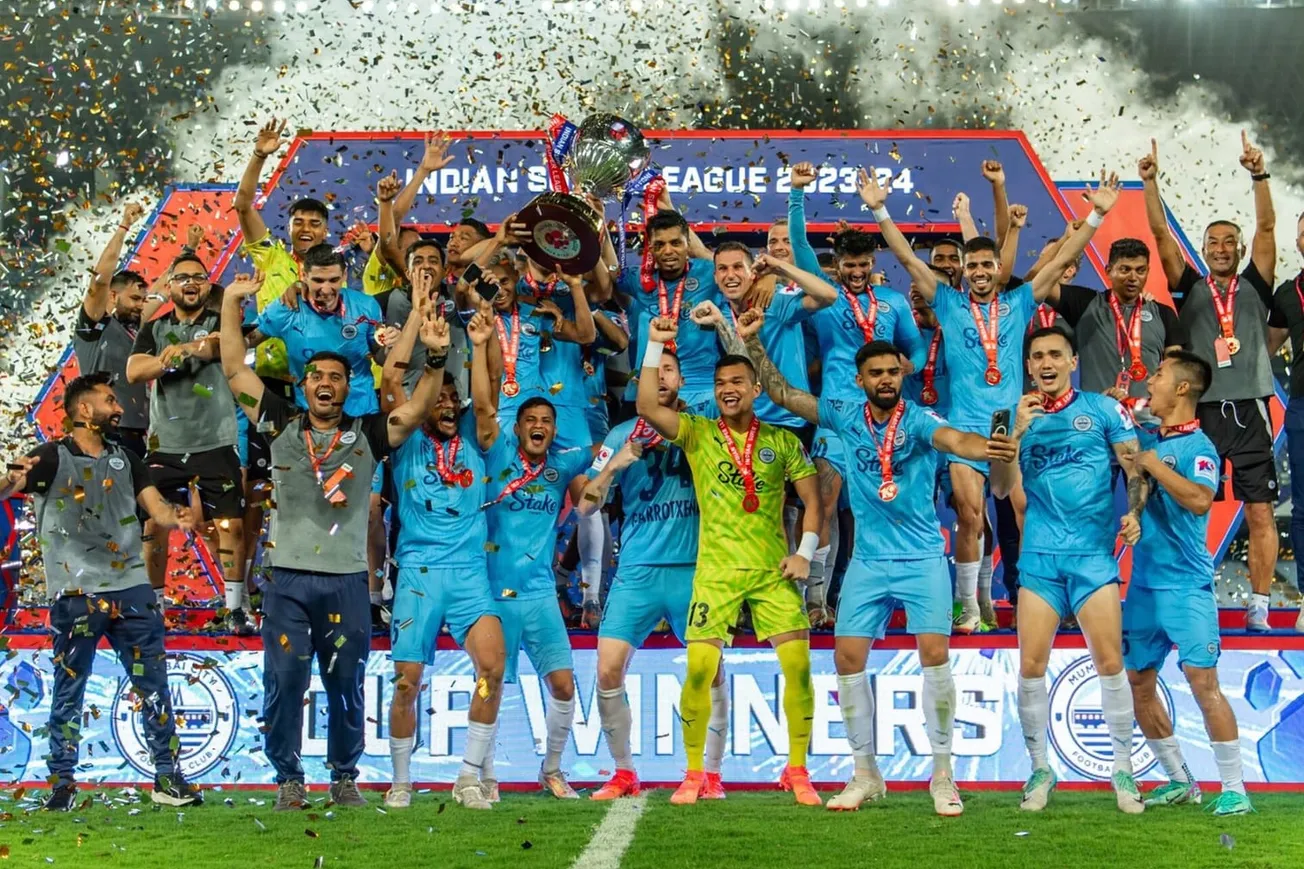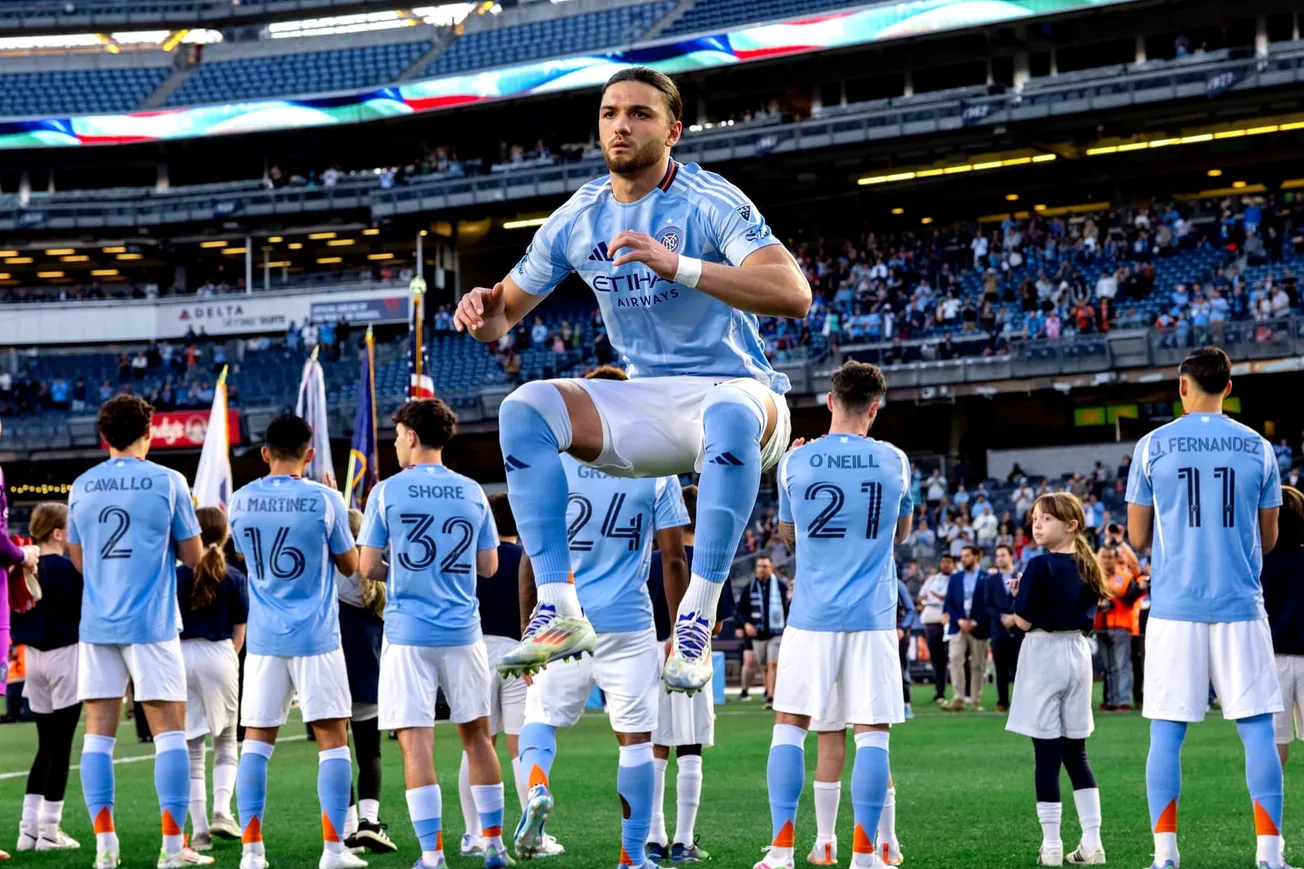These days, New York City FC is undergoing something of an identity crisis.
They’re grappling with a visual one, of course, as they somehow find themselves straddling two crests and three home venues in the same season, which has to be a record. They’re also sporting two separate personas from a competitive perspective.
The first identity comes in how NYCFC presents itself to the MLS world. It's forged by on-field triumphs like we saw in 2021 and verbal statements of intent from the front office. As Sporting Director David Lee puts it, "The goal for our organization is to win as many trophies as we can."
It’s an alpha mentality, one that NYCFC and City Football Group as a whole have become accustomed to demonstrating — a classic Evil Empire energy that’s particularly fitting for New York sports.
There’s also a second identity, one conveyed by what the front office has done recently to achieve those self-proclaimed goals of trophy hunting.
Since winning MLS Cup, NYCFC has demonstrated a notable lack of urgency to return to the summit. Rather than taking another go at glory, the club has repeatedly sacrificed its current chances in favor of chasing future rewards.
From offloading core players with no succession plans, to loaning out key assets to maximize future transfer value, and allowing its spending to fall behind the rest of the growing league’s elite, NYCFC’s post-Cup model feels nothing like a side chasing silverware. They’ve instead assumed the identity of a club that looks comfortable developing young players, hoping for the playoffs, and making do until the new stadium opens in 2027.
Rebuild, Part II?
Questions will be asked about NYCFC’s approach to this just-closed MLS Primary Transfer Window.
The 2023 season was one we can only hope is buried by the sands of time, but 2024 was a step in the right direction. While the results that year were hot and cold, a playoff-clinching 6th Place finish and a sneaky run to a Conference Semifinal were welcomed as tangible progress.
Crucially, the makings of a strong foundation began to emerge within the squad. New stars like Matt Freese and Alonso Martínez exploded onto the scene to join the likes of Keaton Parks, James Sands, and Santiago Rodríguez to form a spine that looked capable of one day returning to their 2021 MLS Cup glory.
Lee even made the bold move to sack head coach Nick Cushing immediately after the end of the 2024 season, eventually replacing him with the exciting Pascal Jansen and effectively declaring that while last season was an improvement, it still wasn’t good enough.
It felt like a strong Primary Transfer Window ahead of the 2025 season could catapult NYCFC into something resembling an Eastern Conference contender. Instead, the opposite happened.
Homegrown hero and midfield anchor James Sands was sent out on loan to FC St. Pauli in Germany, and talisman Santiago Rodríguez was sold to Botafogo in Brazil for a reported $15 million the day the MLS regular season started. The talented youngsters Jovan Mijatović and Christian McFarlane are now seeking new opportunities in Europe.
Rather than strengthening, NYCFC's winter transfer business was defined by departures, leaving Jansen to embark on his maiden MLS voyage with a shorthanded crew, many of whom are too young to legally buy a beer at Billy’s Sports Bar.
Familiar flaws
For NYCFC fans, this feels all too familiar.
The scars from losing guys like Taty Castellanos, Sean Johnson, Alex Callens, and Anton Tinnerholm just a few years earlier never fully healed. The idea of selling more talent, just as the stitches from the last squad surgery were being removed, is undeniably painful.
However, the frustration shouldn’t necessarily lie in the fact that NYCFC has sold talent. Major League Soccer is a selling league these days, which is a positive in the grand scheme of things. If you’re going to sell while still trying to compete for trophies, there needs to be a concrete strategy in place.
This is where alarm bells start ringing for NYCFC fans, as many of the transfer pitfalls that doomed the 2023 season have already been repeated in 2025.
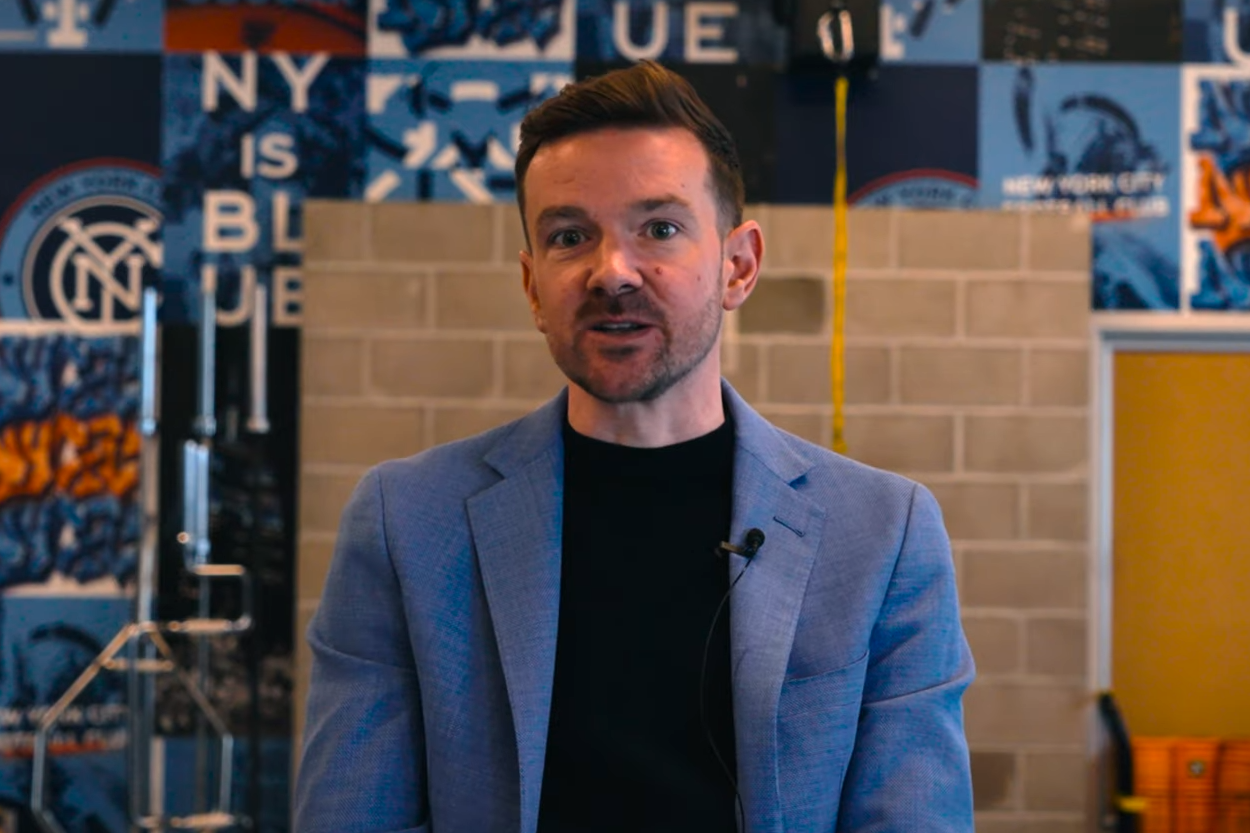
A sloooooooooooow transfer strategy
Many of NYCFC’s squad-building issues trace back to the glacial speed at which they do business.
We saw this in the lead time needed to backfill for James Sands. His departure was announced on January 1, a month before the window even opened. The Sands replacement, Aiden O’Neill, wasn’t announced by the team until April 25, two days after the window officially closed — and 114 days after Sands left.
That’s nearly five months to replace a player that, in all likelihood, NYCFC knew they would lose well before his officially announced departure.
O’Neill’s visa process is still ongoing, meaning he remains unavailable for selection 11 matches into NYCFC’s season. Somehow, he still serves as the quicker of the two replacement signings, as the wait for a No 10 will continue into the summer.
This slow speed of transfer dealing is nothing new for NYCFC and can be seen in their approach to sales as much as it’s seen in their approach to signings. Through a repeated, loan-first, sell-later strategy, NYCFC first sent out the likes of Taty, Talles Magno, and Sands with the ultimate goal of selling them later on. The hope is that they perform well enough away from the club to garner a greater transfer fee than they would receive if they were still at NYCFC.
While this can be effective at jacking up that future fee, it comes at a real cost to the current NYCFC roster. For example, in the year Taty spent on loan honing his craft at Girona, NYCFC’s attack flailed without him. The front office foolishly entrusted an obviously out-of-position Talles Magno and an out-of-his-depth Gabe Segal to the No 9 role to replace Taty’s Golden Boot production, with the two of them combining for just 6 goals all season.
Now that it’s Talles Magno’s turn out on loan, NYCFC finds itself short both a creative presence on the wings and an additional open Designated Player slot the team could fill while the winger is with Corinthians.
So while Taty was sold for a large fee post-loan, and while the same could still be true for Talles Magno, a side with genuine title aspirations would have to ask itself if those marginal transfer gains are worth the squad holes created in the interim.
It all points to a transfer strategy that lacks urgency on both sides of the deal, selling and replacing. It’s echoed by Lee himself, where in a recent interview, he preemptively justified any lack of winter signings by describing the secondary window as "coming quickly on the heels of when the Primary Transfer Window closes." That summer window doesn’t open until July 24, three months after the close of the winter window. By then, NYCFC will have played 23 of their 34 regular-season MLS matches.
It’s here that the dual identities of NYCFC begin to emerge. On the one hand, you told your fanbase that you’re trying to win trophies every season, but on the other, you’re telling fans it's okay to play two-thirds of the season with an unfinished squad. A team’s playoff standing isn’t set in stone when there are only 11 games left in the season, but it's certainly much of the way decided — just ask the 2023 version of NYCFC.
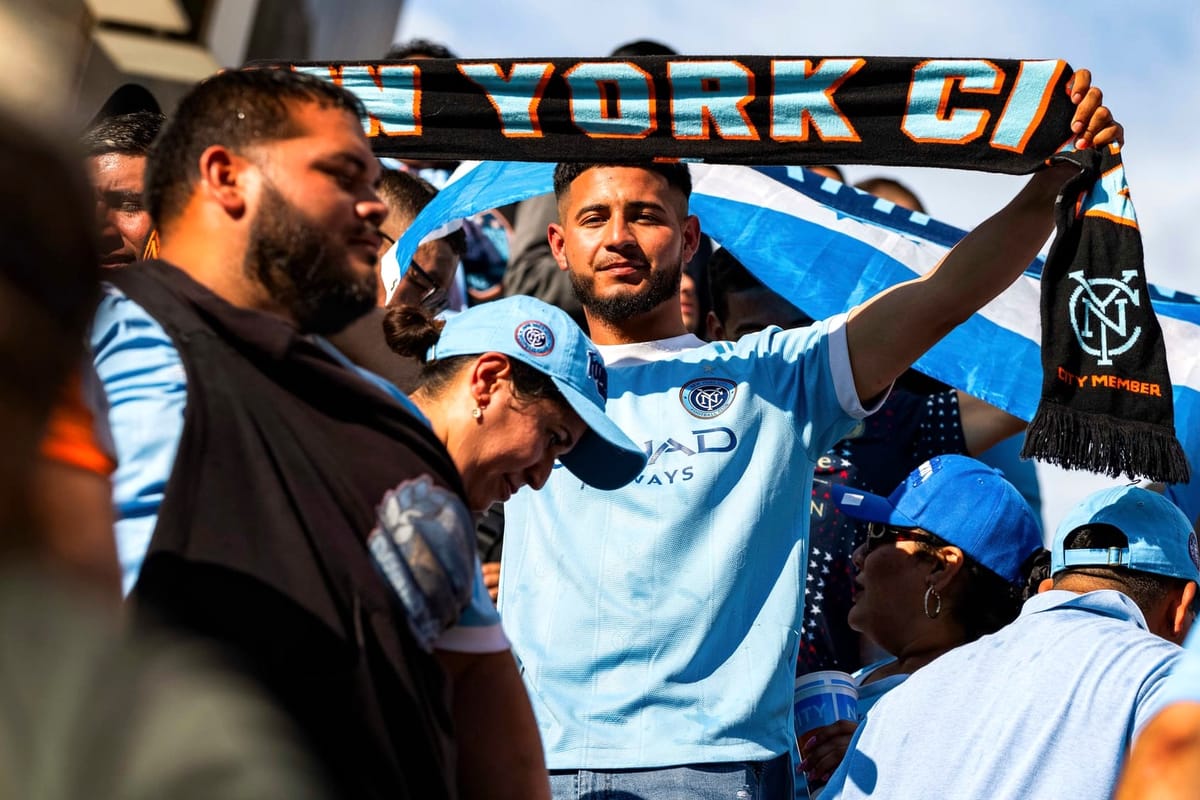
If you're not gonna spend, you better be smart
With expensive pieces like Talles Magno, Mijatović, and Sands all on loan, and with no transfer fees through the door yet as a result, NYCFC’s spending is now hamstrung considerably. Once an MLS side flush with cash, NYCFC now finds itself towards the bottom of recent charts when it comes to spending.
After a busy primary transfer window ahead of the 2024 season, the CFG bank vault slammed shut for NYCFC. Lee spent $0 in the summer window of last year, and spent just $2.8 million in this most recent window. That’s good for the 4th-lowest in the league over that time.
Compare this to some of NYCFC’s Eastern Conference rivals like Atlanta United FC and FC Cincinnati, who dropped $49.3 million and $33.7 million, respectively, over that same timeframe, with hopes of challenging for hardware right away.
The beauty of MLS is that you don’t necessarily have to spend to compete. Since its inception, the league has been built on the idea of parity, and its unique (albeit overcomplicated) transfer and roster mechanisms are structured to reflect this.
Due to the recent sales, NYCFC found itself in an incredible state of roster flexibility to exploit these mechanisms. With an open DP slot, a league-leading GAM warchest of $4.2 million, and the cash in-house from Santi's sale, it felt like there were a million different directions David Lee could go to bolster this squad before the summer.
Perhaps they could’ve taken a page out of Austin FC’s book, which nabbed Robert Taylor from Inter Miami for just $750k in GAM to bolster their sputtering attack.
Or they could’ve looked to Columbus Crew's use of the new "cash-for-player" trade mechanism for guidance on how to replace a lost talisman. After parting ways with the great Cucho Hernández for a reported $16 million, they grabbed a proven goal-getter in Dániel Gazdag for $4.5 million to remain competitive in the interim while retaining the rest of the Cucho transfer gains for summer spending.
NYCFC opted for neither of such routes in their efforts to replace Santi. Instead, they chose to venture forth into the MLS season with a squad so thin that Jansen has regularly called up NYCFC II players to Short-Term Agreements, and recently brought along three goalkeepers just to fill his bench on matchdays.
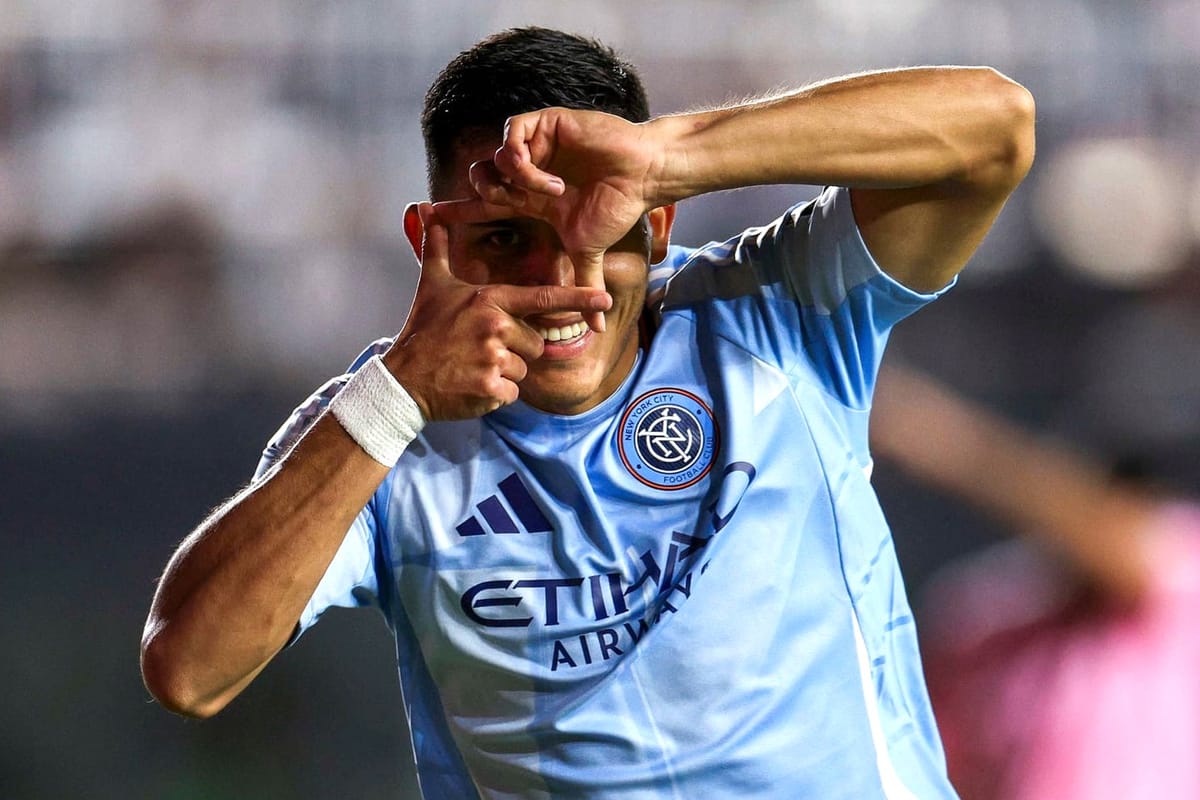
A frustrating conclusion
For NYCFC fans, the frustrating conclusion of all this is that NYCFC’s actions are not those of a club gunning for trophies, even if that’s how the club talks about itself.
Instead, the true identity of NYCFC in this era appears to be that of a development side, relying upon a youth-focused coach to get the best out of young academy talents like Jonathan Shore (18), Tayvon Gray (22), and Justin Haak (23), along with their more expensive young imports like Agustín Ojeda (20), Julián Fernández (21), and Mitja Ilenič (20).
Once those players reach maturity, perhaps they’ll be sold for big fees like Taty ($20 million), Santi ($17 million), or Gabriel Pereira ($10 million), and maybe that's enough to keep this transfer machine turning and maintain a sustainable business model.
If done shrewdly, NYCFC can take a development-focused route and still compete for trophies. That's not a groundbreaking concept in MLS. Until Lee and company can implement a practical process for replacing such talent efficiently, this organization is at risk of existing in permanent flux, constantly backfilling lost talent a year after the fact and wondering why no sporting ground has been gained on their big-spending, fast-acting MLS rivals.
Without that balance, however, they’ll likely stagnate at their current level: A side that should probably make the playoffs, and one that will hope to go on another miracle run come October.
That acceptance of mediocrity plays into this pre-stadium purgatory that's often implied, but hard to pinpoint — that NYCFC won't be sexy again until their new stadium opens in 2027. Maybe then, when there are luxury suites to sell and new fans to woo, the club will attempt to make good on its yearly promise of rubbing shoulders with the MLS elite with some splashy signings and faster action in the transfer market.
For the fans that have followed the team from Yankee Stadium to Etihad Park, Red Weddings to Parties in Portland, and from Jeb Brovsky to Aiden O’Neill, that’s simply not fair. It's this very group that the club has relied upon for survival during its 14-year wait for a proper home venue — the least you can give them is your honest word.
Until NYCFC starts acting like the top-tier MLS franchise that they have the fan base, finances, and future infrastructure to become, they should either spare us the trophy-chasing talk or show us the ambition and competence needed to make that talk a reality.

